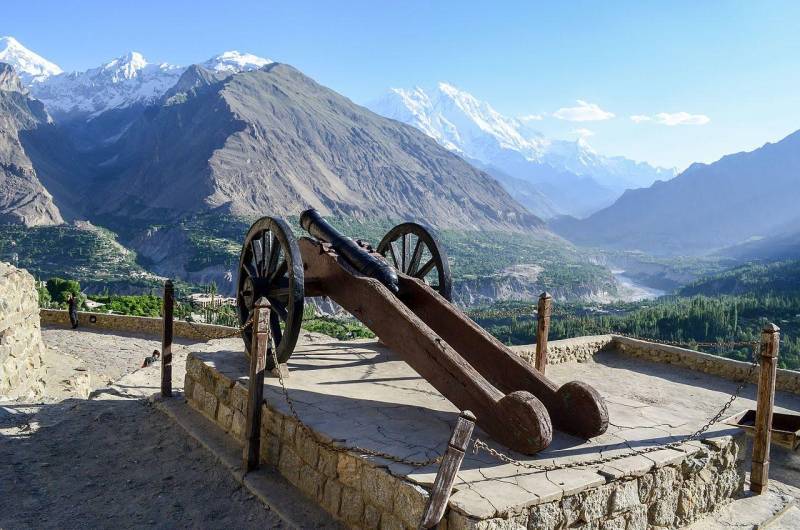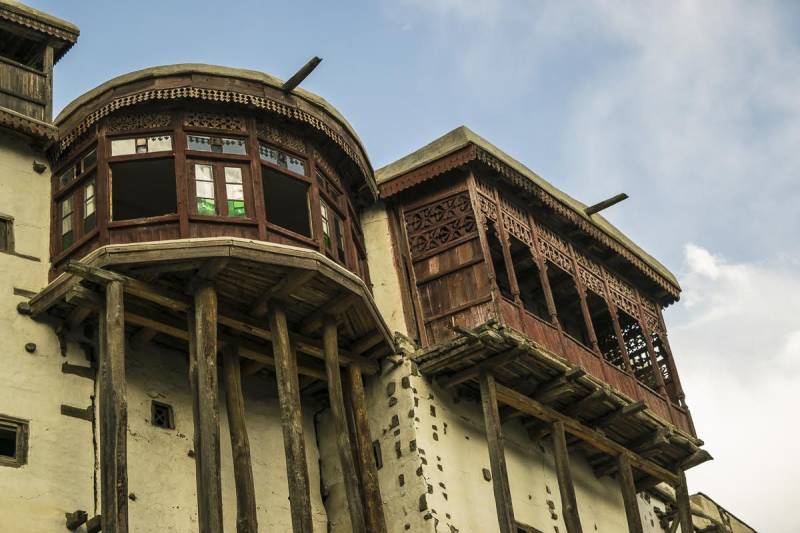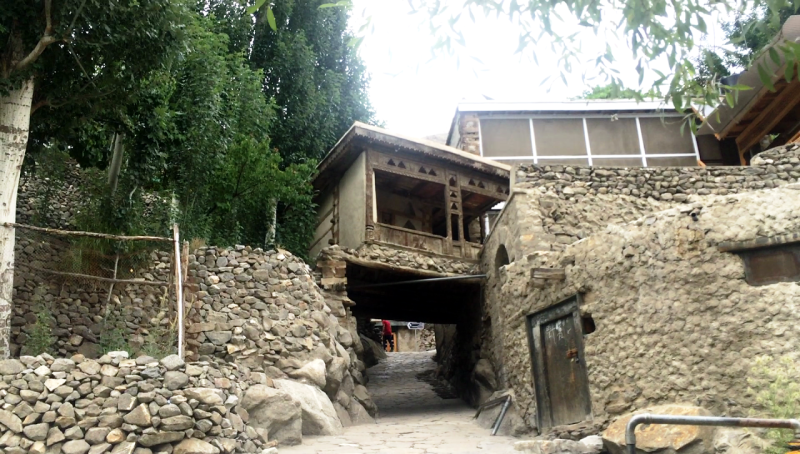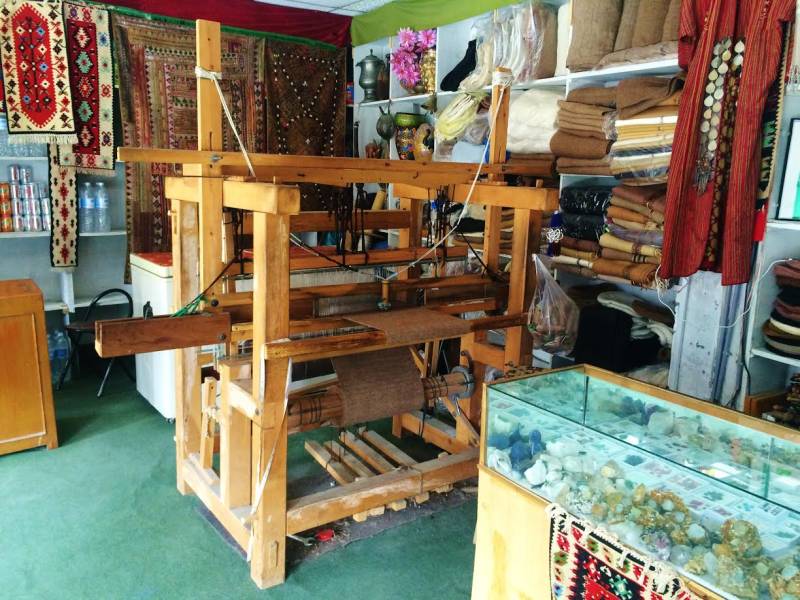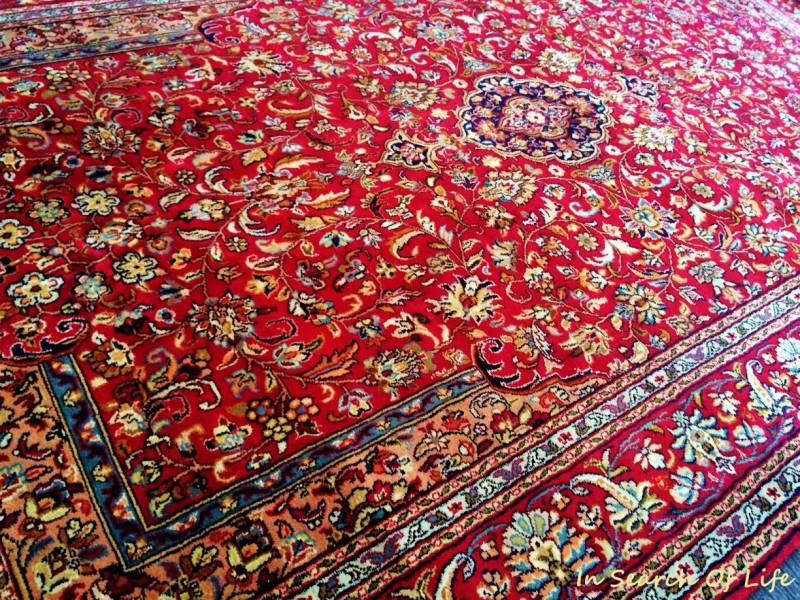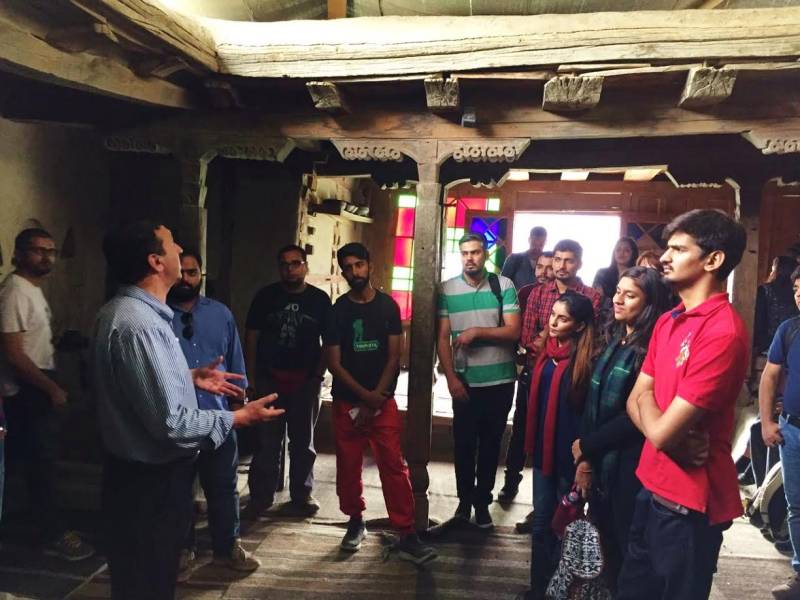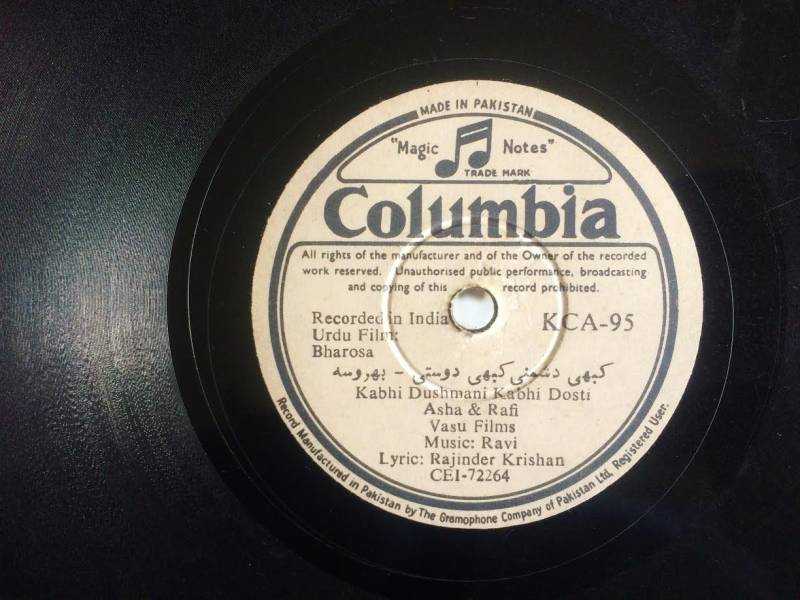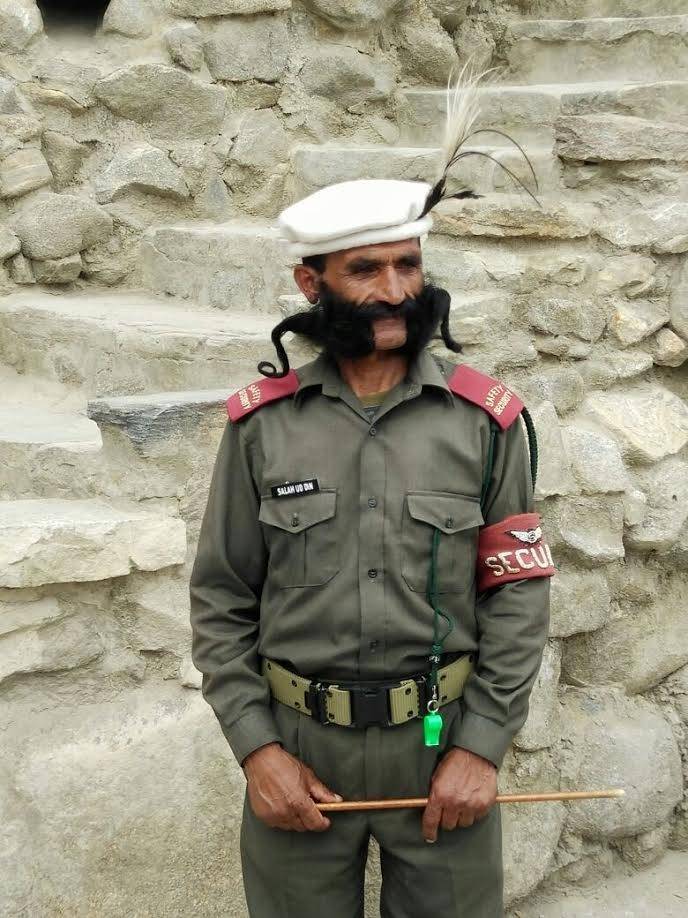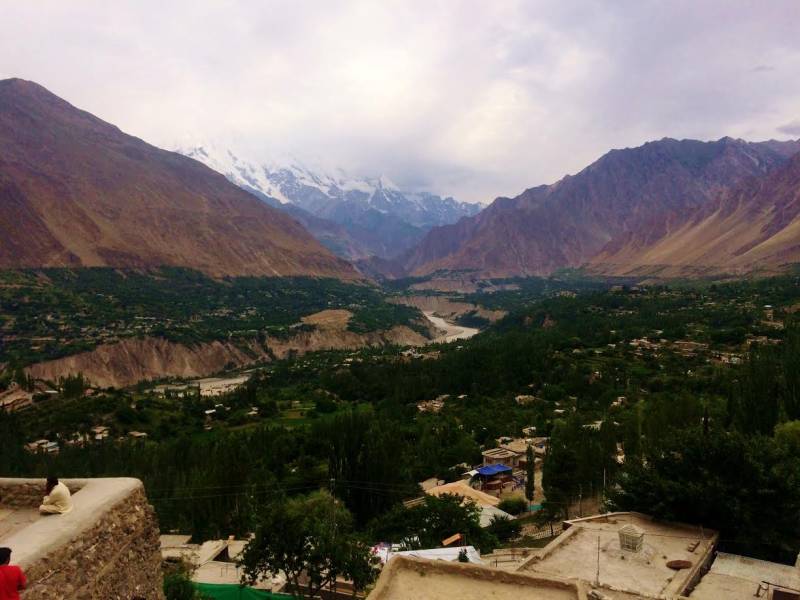We were standing reluctant in Karimabad bazaar, across the valley from Altit Fort which we had visited earlier that day, and the steep hike to Baltit Fort seemed nothing less than a summit to Mount Everest. Almost the entire group had disappeared behind the turns of the road. Our “ideal” weight for hiking and great interest in the shops had kept us behind. There was no other way to reach the fort so we exclaimed “Ya Ali!” and started hiking.

Karimabad, a beautiful and interesting place is the heart of Hunza valley. It is not just a center of officialdom and commerce but a cultural hub as well. While hiking up to Baltit Fort, you come across shops selling amazing antiques, local handicrafts, traditional jewelry, stuffed animals, organic herbs, dry fruits, local delicacies, shawls, exquisite hand knotted carpets and the list goes on and on.

I remember entering a shop which sold antiques among other things. Judging by my interest, the shop keeper pointed towards a corner. There was an old gramophone player displayed on a shelf. He played a record on my request. The black disc was so heavily scratched that the sound was nothing more than disruptions; but the title boasted a Muhammad Rafi-Asha Bhosle duet.

There was a carpet showroom with its walls hidden behind rolls of a beautiful collection of different kinds of carpets. From locally woven raw carpets to Afghan variety and the elitist Kashani Persian rugs, the showroom was a treasure of the craft. The owner especially unrolled a beautiful scarlet color Kashmiri carpet woven in Srinagar on Persian pattern. It is true what they say about the Persian carpet, they are a reflection of the gardens of heaven. Another wonder in the showroom was an actually working handloom put on display. The fine craft of shawl and carpet weaving still requires the age old manual techniques. Stuff produced on machines can never be good enough. Karimabad is very modern as compared to other hill stations in Pakistan. Every big shop had a credit card machine. It is more of a need because at times the craft they display, like the Kashmiri carpet shown to us, is worth hundreds of thousands.

Hunza’s culture is heavily reflected in their homes and day to day lives. They have a simple and at the same time attractive country lifestyle. Buildings are made almost entirely out of stone and wood. The narrow road leading up to Baltit Fort is a beautiful example of stone masonry. There are some beautiful turns of the road, where you find it difficult to decide whether you are in Karimabad or old city of Jerusalem. Apricot gardens along the road and flower beds outside the windows make it more attractive. At one point, the road makes its way from beneath a house. There were steps for pedestrians and to our surprise, a sanitary system at this height.

Half an hour hike up to Baltit Fort took our breath away metaphorically as well as literally, for the hike was difficult and the panoramic view of the valley from the fort was exquisite. The fort is yet another cultural and historical asset of Gilgit Baltistan. It is a fine example of Balti architecture. Having seen seven centuries of Hunza’s history, today it stands as an enduring symbol of its rich culture and eventful past. It is much grander than its predecessor Altit Fort. Following a power struggle seven centuries ago, Baltit Fort became the royal residence of Mirs of Hunza and their seat of government. The British conquered Hunza in 1892. They demolished high walls surrounding the fort, exposing its structure to the valley hence diminishing its significance as a stronghold against the attacking enemy. Baltit Fort remained a royal residence until 1945.

The fort is located in the heart of Hunza valley. Its strategic, defensive location was highly significant. Rear side of the fort is covered by great snowcapped mountains. Its façade faces the valley and has the advantage of height. On top of a hill, over many thick layers of stone masonry, the impressive structure of the fort stands with all its majesty overlooking the entire valley. A high staircase takes you to the small entrance door at the base of the fort. Beautiful wooden balconies, which adorn the façade of the fort, are given reinforcement by several meters high wooden pillars. Baltit was abandoned in 1945 by the royal family. Over the decades, it fell into disuse and the structure deteriorated. Aga Khan Trust undertook the restoration works and the fort was converted into a museum in the 1990s.

When we finally reached our destination, the party had already gone for the tour. One of them came back to fetch us. Various rooms of the fort exhibit different aspects of the royal life and Hunza’s culture. There is an interesting display of weapons, stuffed animals, articles of use, furniture etc. After the tour of the interior, we spent some time on the roof of the fort which as I mentioned earlier offers such a splendid view of the valley and mountains, Rakaposhi in particular. Just beside the exit door, antique cannon are still placed, pointed at the enemy which no longer exists. There was a great crowd of tourists outside in the courtyard. The security guard, who is notoriously famous all over the world for his unreasonably large moustaches, was standing on duty surrounded by a crowd of people who wished to take pictures with him.

Back in downtown Karimabad, some of us retired to Serena Hotel for a cup of tea. Whilst we were sitting in their tastefully decorated dining hall, I heard a sharp sound of bagpipes as if a band was playing nearby. It was indeed the case. Just outside in the garden, a band of bagpipers and drummers was playing a beautiful tune in honor of Aga Khan’s 49th coronation anniversary. They were wearing scarlet and khaki liveries and traditional caps adorned with white feathers. They were immensely talented. The band kept playing for some time and made that beautiful Hunza evening, magical with their exquisite tunes. There was a strange beauty to their music. It was so full of happiness and excitement. After they were done playing, we personally expressed our gratitude for such a great performance and took pictures with them.
That evening, back at Eagle’s Nest, I was sitting in the garden listening to music. Night had fallen and Hunza’s view was calm and quiet, illuminated in dim lights. Suddenly, the valley lit up with fireworks. It was the conclusion of day long celebrations of Aga Khan’s coronation anniversary. Young men had climbed very high up the mountains to light up fireworks. A crown made of fire was burning at the mountain base just on top of the city. It was yet another beautiful Hunza night.

Continued…

